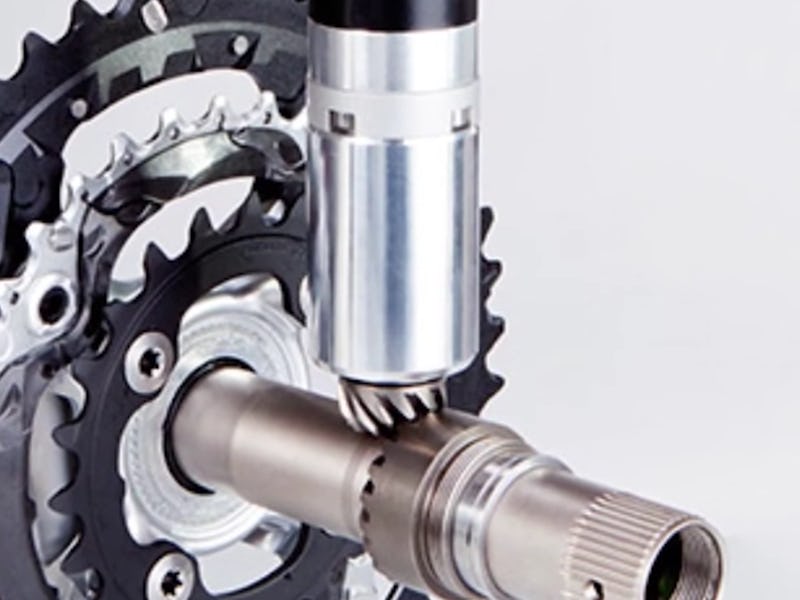Inventor of Hidden Bike Motor Tells '60 Minutes' How to Cheat
Istvan Varjas says pro cyclists have probably used the hard-to-detect motor for years.

“This is like I’m on flat ground,” says anchor Bill Whitaker on Sunday’s edition of 60 Minutes. But in fact, he’s pedaling uphill in the Hungarian countryside. What’s making it so easy for him? There’s a tiny motor, hidden in the hub of the bicycle, helping to propel Whitaker up the hill. This motor is the brainchild of Hungarian bicyclist, inventor, and businessman Istvan Varjas, who says professional cyclists have probably used it for years to cheat in competitions. But even though he invented it, Varjas washes his hands of any wrongdoing that may come from people using the device. “If a grandfather came to buy a bike and after it’s gone to … his grandson who is racing,” Varjas tells 60 Minutes, “it’s not my problem.”
'60 MInutes' anchor BIll Whitaker spins the pedal on one of Istvan Varjas's bikes and watches as the wheel keeps turning with the help of a secret electric motor.
This cavalier attitude belies the inventor’s expertise, which he has honed over many years. His cheater devices, which Varjas started making nearly 20 years ago, are all made with brushless electric motors and powered by lithium batteries. The entire assembly fits within the bicycle’s frame and is therefore nearly undetectable. There are only two exposed parts of this so-called “mechanical doping” device, which is illegal for competition under United Cycling Institute rules. These two parts, a pinion driven by the motor and a ring attached to the pedal crank, comprise a hypoid gear set that operates so quietly it can’t be heard over the normal chain sounds.
Istvan Varjas's bicycle motor turns the pedal crank with a hidden gear.
In fact, Varjas says that UCI inspectors can’t detect the most sophisticated versions of these devices, even with electronic gear. Cycling Tips reports that only by removing a bicycle wheel and weighing it would authorities be able to tell that a cheater device had been installed. So far, authorities have been unwilling to do that. In the same interview, Varjas also claimed that the UCI, professional cycling’s governing body, is not as clueless to the problem as it may seem. “They manipulate you,” he says. “If you ask me who uses engines, I answer you: go to the UCI. They know.”
Hidden bicycle motor inventor Istvan Varjas shows '60 Minutes' anchor Bill Whitaker how the device fits inside a bicycle frame.
Back in his workshop, Varjas tells Whitaker on 60 Minutes that he first developed the device in 1998, and that an anonymous buyer paid him $2 million for the design … and his silence. He agreed not to make the motors or even talk about them for a decade, but he has since broken his silence in recent years. He says that his design and others like it have proliferated throughout the sport, and teams could even install them without riders knowing they’re riding illegal bikes.
Bluetooth capability on advanced motors, which Varjas says can cost around 200,000 Euros, can detect a rider’s heart rate or lactic acid levels and activate the device to give a brief respite from strenuous exertion. The bicycles Varjas builds employ a button hidden on the handlebars to activate the motor, and he says he does not sell to professional teams, only private individuals.
But three-time Tour de France winner Greg LeMond tells Whitaker he’s sure they’re being used in competition. He echoes Varjas’s sentiments about the UCI’s testing, telling 60 Minutes that the current precautions against mechanical doping are insufficient. “I don’t trust it until they figure out how to take the motor out,” says LeMond. “I won’t trust any victories of the Tour de France.”